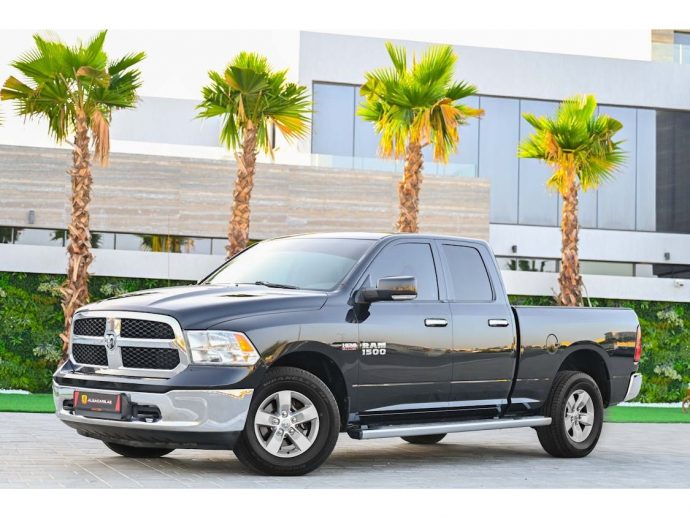Categories more
- Adventures (17)
- Arts / Collectables (15)
- Automotive (37)
- Aviation (11)
- Bath, Body, & Health (77)
- Children (6)
- Cigars / Spirits (32)
- Cuisine (16)
- Design/Architecture (22)
- Electronics (13)
- Entertainment (4)
- Event Planning (5)
- Fashion (46)
- Finance (9)
- Gifts / Misc (6)
- Home Decor (45)
- Jewelry (41)
- Pets (3)
- Philanthropy (1)
- Real Estate (16)
- Services (23)
- Sports / Golf (14)
- Vacation / Travel (60)
- Watches / Pens (15)
- Wines / Vines (24)
- Yachting / Boating (17)
This Is Why Your Ram 1500 Still Feels Sluggish After a Cold Air Intake
Published
04/05/2025Cold air intakes promise quick power gains and better throttle response. But for plenty of Ram 1500 owners, the truck still feels sluggish even after the upgrade. It’s frustrating—especially when you’ve spent money and time expecting a noticeable difference.
Other factors—like exhaust restrictions, poor tuning, heat soak, or the wrong wheels and transmission setup—can drag down performance and make upgrades feel pointless. Spotting these weak links is the first step toward making your truck feel the way it should—responsive, powerful, and ready to move.
Why Your Dodge Ram Exhaust Might Be Holding You Back
A cold air intake won’t help much if your Dodge Ram exhaust system holds things back. Factory exhausts often choke airflow with narrow pipes and old designs. This makes it harder for exhaust gases to escape, limiting engine power. Your engine can’t use the extra air if it can’t breathe out properly.
A clogged exhaust can make things worse. Over time, debris builds up and blocks the flow of exhaust gases. This makes the engine work harder and lowers efficiency. Checking for blockages—or upgrading the exhaust—can help clear the airflow your engine needs. With better flow, you’re more likely to regain lost power and improve performance.
What Engine Tuning Might Be Missing
After installing a cold air intake, you might be let down if the engine isn’t tuned right. More air needs more fuel to keep things balanced. If not, the engine runs “lean,” with too much air and not enough fuel. That can kill power and hurt gas mileage, especially during hard acceleration when the fuel demand spikes and the ECU can't keep up, making the upgrade feel pointless.
Many Ram 1500s have factory ECUs with safe, stock settings. These don’t adjust for the extra air from your new intake, so the engine can’t take full advantage. A custom tune fixes this by balancing the air and fuel, giving you the power boost you expected—and making the truck more fun to drive.
How Heat Soak Can Kill Intake Gains
Cold air intakes are meant to deliver cooler air to the engine. Cooler air helps improve power, but that’s only true if the intake system isn’t heating up along the way. If the intake tubing sits too close to the engine, it can absorb heat from nearby parts. This warms up the air before it reaches the engine, wiping out any potential benefits.
Heat shields are meant to stop this, but they don’t always do the job. If they’re badly designed, made with cheap materials, or not sealed right, they can’t block the engine’s heat well. To keep your cold air intake working right, check the heat shield often. You might need to adjust the intake’s position so the engine gets the coolest air possible.
How Wheels and Tires Can Slow You Down
Big wheels and heavy tires might look great, but they can hurt your truck’s performance. Heavier wheels make the engine work harder, especially when accelerating. Oversized tires also increase rolling resistance, making it tougher for the truck to move efficiently. Even if you’ve added horsepower with a cold air intake, the extra weight can cancel out those gains.
This problem often gets overlooked in the excitement of upgrading other parts. But switching to lighter wheels and tires can make a noticeable difference. Paying attention to the weight and size of these components helps keep your truck balanced, allowing your performance upgrades to shine.
Why Your Transmission Might Be the Problem
A cold air intake can add power, but if your transmission isn’t set up for it, you might not feel much of a difference. Stock shift points are made for factory setups, not upgrades. For instance, the transmission might upshift at 3,000 RPM, just as the engine is beginning to deliver peak power, leaving you with underwhelming acceleration.
An old torque converter can make things worse. It slows down how fast power gets to the wheels, making your truck feel sluggish. A transmission tune can fix this. Adjusting shift points and upgrading the torque converter can help you actually feel the power your upgrades are supposed to give you.
Getting more power out of your Ram 1500 takes more than just bolting on a cold air intake. If the exhaust is too restrictive, airflow stalls. If the engine runs lean, power drops. Heat soak can cancel out cooler air gains, and oversized wheels or heavy tires add strain. Even the best upgrades fall flat if your transmission shifts at the wrong time. To really feel the difference, focus on balance—upgrade the exhaust, get a proper tune, lighten your wheels, and dial in your shift points. When everything works together, your truck finally delivers the performance you’ve been chasing.















